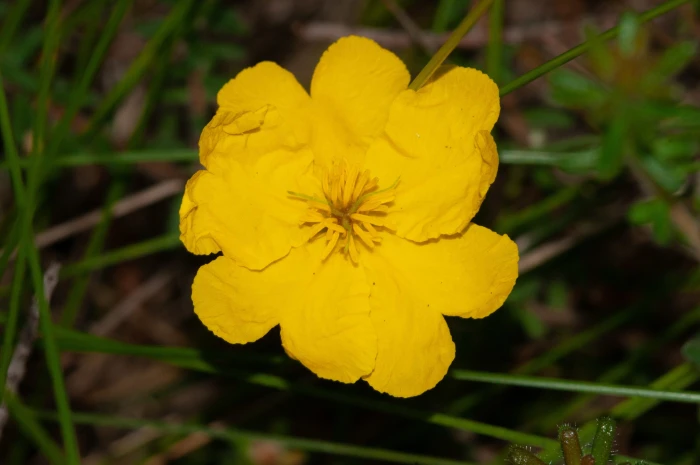Hairy Guinea-Flower
(Hibbertia vestita)
Hairy Guinea-Flower (Hibbertia vestita)
/
/

Rolf Lawrenz
CC BY 4.0
Image By:
Rolf Lawrenz
Recorded By:
Copyright:
CC BY 4.0
Copyright Notice:
Photo by: Rolf Lawrenz | License Type: CC BY 4.0 | License URL: http://creativecommons.org/licenses/by/4.0/ | Rights Holder: Rolf Lawrenz | Publisher: iNaturalist | Date Created: 2019-08-10T15:08:14-07:00 |













Estimated Native Range
Climate Requirements for Pahrump, Nevada
| This Plant | Your Site | Plant Suitability for Your Location | ||
|---|---|---|---|---|
| • Precipitation | 18" - 78" | 5" | Your precipitation may be insufficient for this plant. Irrigate N" / year. | Irrigate N" / year |
| • High Temp. | 71°F - 95°F | 101°F | Your summers may be too hot for this plant. | Too hot |
| • Low Temp. | 30°F - 59°F | 28°F | Your winter temperatures may be too cold for this plant | Too cold |
This plant should grow well at your location with about N inches per year (Y minutes per month) of irrigation.
Summary
Hibbertia vestita, commonly known as Hairy Guinea-Flower, is an evergreen subshrub native to open eucalypt forests and coastal heathlands in Eastern Australia. It typically grows to a height of up to 30 cm (12 in) and has a sprawling habit. The foliage is covered with simple hairs, giving the plant a soft, velvety texture, though the leaves may become glabrous as they mature. This subshrub is notable for its bright yellow flowers that bloom predominantly in spring and autumn, adding a splash of color to the garden landscape.
The Hairy Guinea-Flower is valued for its low-growing, ground-covering form and vibrant flowers, which can enliven rockeries, borders, and native plant gardens. It is relatively easy to maintain, requiring minimal care once established. In cultivation, it thrives in full sun but can tolerate part shade, and it prefers well-drained soils. While it needs regular watering during establishment, it becomes more drought-tolerant over time. It is not commonly afflicted by diseases or pests, making it a resilient choice for gardeners.CC BY-SA 4.0
The Hairy Guinea-Flower is valued for its low-growing, ground-covering form and vibrant flowers, which can enliven rockeries, borders, and native plant gardens. It is relatively easy to maintain, requiring minimal care once established. In cultivation, it thrives in full sun but can tolerate part shade, and it prefers well-drained soils. While it needs regular watering during establishment, it becomes more drought-tolerant over time. It is not commonly afflicted by diseases or pests, making it a resilient choice for gardeners.CC BY-SA 4.0
Plant Description
- Plant Type: Subshrub
- Height: 0.5-1 feet
- Width: 1.5-2 feet
- Growth Rate: Moderate
- Flower Color: Yellow
- Flowering Season: Spring, Fall
- Leaf Retention: Evergreen
Growth Requirements
- Sun: Full Sun
- Water: Medium
- Drainage: Medium, Fast
Common Uses
Bee Garden, Border Plant, Butterfly Garden, Drought Tolerant, Low Maintenance, Potted Plant, Rock Garden, Salt Tolerant, Showy Flowers
Natural Habitat
Open eucalypt forests and coastal heathlands in Eastern Australia
Other Names
Common Names:
Scientific Names: Hibbertia vestita, Hibbertia vestita var. genuina
GBIF Accepted Name: Hibbertia vestita A.Cunn. ex Benth.